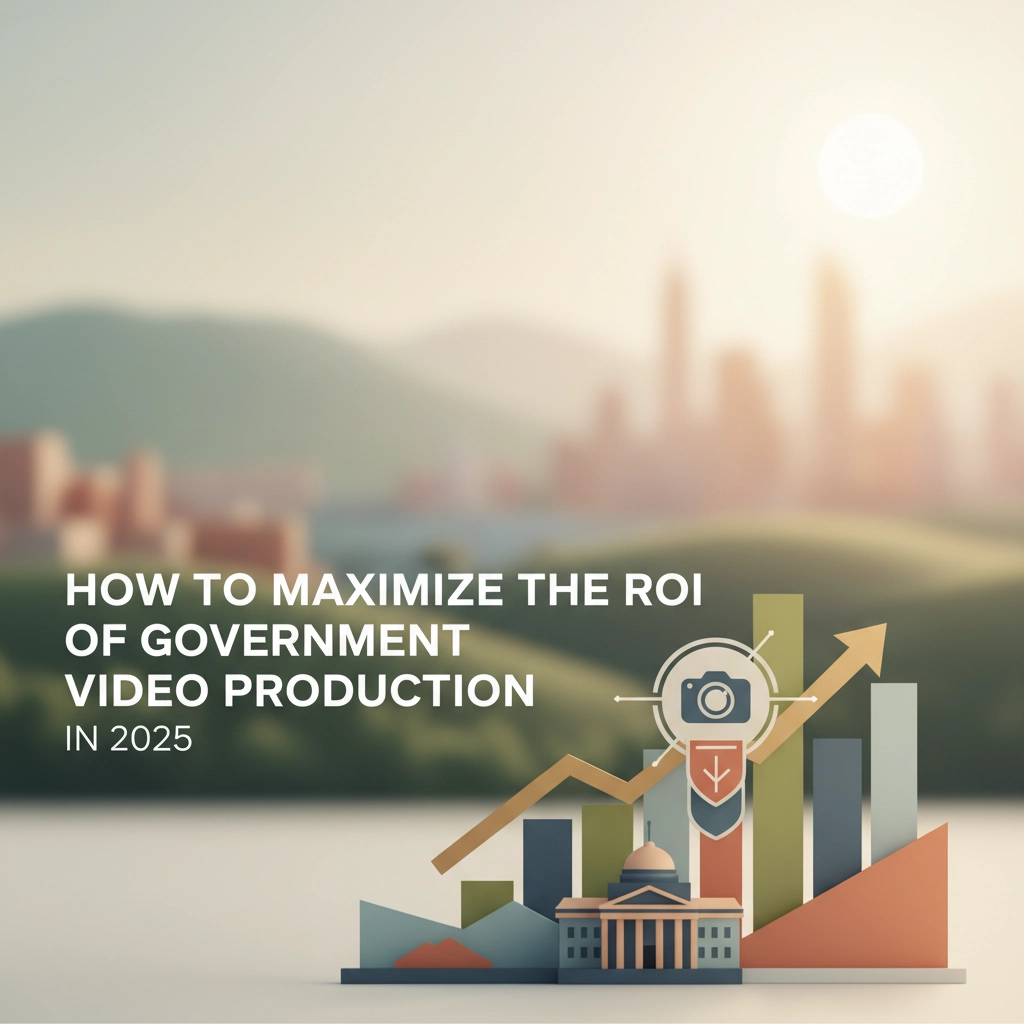How to Maximize the ROI of Government Video Production in 2025

Let's be honest, government video production has a bit of a reputation problem. Think dry training videos, uninspiring PSAs, and content that puts citizens to sleep faster than a city council meeting. But here's the thing: 2025 is changing the game entirely.
Government agencies are discovering that strategic video production isn't just about checking boxes anymore, it's about maximizing every taxpayer dollar while actually engaging the people they serve. And guess what? The agencies getting this right are seeing incredible returns on their investment.
Start with Strategy, Not Scripts
Here's where most government video projects go wrong: they jump straight to production without laying the groundwork. You wouldn't build a bridge without blueprints, so why create videos without a strategic framework?
The most successful government video initiatives in 2025 begin with one crucial question: what specific outcome do we want to achieve? Are you trying to increase public awareness about a new program? Drive citizen participation in community initiatives? Improve compliance with regulations?

Research shows that organizations without proper process frameworks waste up to 40% of their production budget. That's taxpayer money down the drain, and nobody wants to explain that to the budget committee.
Smart agencies are now adopting the citizen journey approach instead of just thinking creatively. This means mapping out exactly how your target audience will encounter, consume, and act on your video content. When you align every production phase with specific public service objectives and measurable outcomes, you're setting yourself up for success from day one.
Embrace the AI Revolution
Here's something that might surprise you: artificial intelligence isn't just for tech companies anymore. In 2025, AI-powered video production tools are becoming game-changers for government agencies operating under tight budgets and even tighter deadlines.
AI tools can help you generate scripts, edit raw footage, create captions for accessibility compliance, and even personalize content for different audiences. Think about it, instead of spending weeks editing a single training video, AI tools like Descript or Runway can automate much of the process, freeing up your team to focus on strategy and messaging.
For government agencies, this technology is particularly valuable because it enables the creation of tailored content for different departments or programs while maintaining consistency. Imagine being able to quickly adapt your public health messaging for different communities or creating multiple versions of safety training for various departments, all without starting from scratch each time.
Build Your Asset Library Like a Pro
Stop thinking about individual videos and start thinking like a content ecosystem. The agencies maximizing their ROI in 2025 are building libraries of reusable elements: branded animations, templates, intro sequences, and modular components that can be remixed for different campaigns.

This systematic approach is absolutely brilliant for government work. Think about how often you need to produce similar content types, public service announcements, training materials, program updates, citizen testimonials. Instead of reinventing the wheel every time, you create templates once and adapt them quickly.
Here's the real kicker: agencies using this approach can deliver 10x more video assets while reducing per-asset costs by up to 60%. Once your initial frameworks exist, you can roll out variations in just 3-5 days instead of weeks or months.
Don't Skip the Boring Stuff (It Matters)
Okay, let's talk about the less glamorous side of government video production: but trust me, this stuff can make or break your ROI.
First up: licensing and legal compliance. Government agencies need to be extra careful about talent releases, music licensing, and copyright issues. What seems like a minor oversight can become a major legal headache that costs way more than doing it right the first place.
Make sure your video production partners carry proper insurance coverage: both for their team and for the footage itself. Government work often requires long-term retention of materials for transparency and record-keeping, so backing up content during and after production isn't just smart, it's often legally required.

And here's something many agencies overlook: accessibility requirements. Your videos need to work for all citizens, including those with hearing or visual impairments. Plan for captions, audio descriptions, and screen reader compatibility from the beginning: retrofitting accessibility features costs significantly more than building them in from the start.
Master Platform-Specific Distribution
Here's where a lot of government video strategies fall flat: they create one video and expect it to work everywhere. That's like wearing a tuxedo to a beach volleyball game: technically clothing, but completely wrong for the situation.
Each platform has its own best practices, audience expectations, and technical requirements. Your LinkedIn content needs to be professional and informative, while your TikTok content should be engaging and accessible. Most importantly for government agencies, you need to optimize for the platforms where your actual citizens spend their time.
The sweet spot for most government video content is 15-60 seconds for social platforms, with longer-form content available on your website for those who want more detailed information. This gives you the best of both worlds: quick engagement to capture attention and comprehensive resources for deeper understanding.
Focus on creating evergreen content that delivers value throughout the year rather than chasing short-term trends. Government messaging needs to have staying power, and content that remains relevant and useful months after publication provides much better ROI than viral-but-fleeting content.
Measure What Matters
The video production process doesn't end when you hit publish: that's actually when the real learning begins. The agencies seeing the biggest ROI improvements in 2025 are the ones treating every video as a data collection opportunity.
Track metrics that actually matter for government work: citizen engagement rates, program enrollment increases, compliance improvements, website traffic from video campaigns, and most importantly, how your content is helping you achieve your stated objectives.

Set up A/B testing for different messaging approaches, video lengths, and distribution strategies. Government audiences can be incredibly diverse, and what resonates with one demographic might completely miss the mark with another. Use real data to optimize your approach rather than relying on assumptions.
Don't forget to measure long-term impact too. Government video content often has a longer lifecycle than commercial content, and the full ROI might not be apparent for months after publication.
Your Next Steps
Government video production in 2025 isn't about doing more with less: it's about doing smarter with what you have. By focusing on strategic planning, leveraging new technologies, building reusable assets, and measuring actual results, you can create video content that truly serves your citizens while demonstrating clear value to stakeholders.
The agencies getting this right aren't just checking boxes or fulfilling requirements: they're building genuine connections with their communities and achieving measurable outcomes that justify every dollar spent.
Ready to transform your government video strategy and maximize your ROI? The team at North Brothers Films specializes in helping government agencies create impactful, cost-effective video content that delivers real results. We understand the unique challenges of government communications and have the expertise to help you navigate compliance requirements while creating content that actually engages your audience.
Get in touch with us today to discuss how we can help you maximize your video production ROI in 2025.
